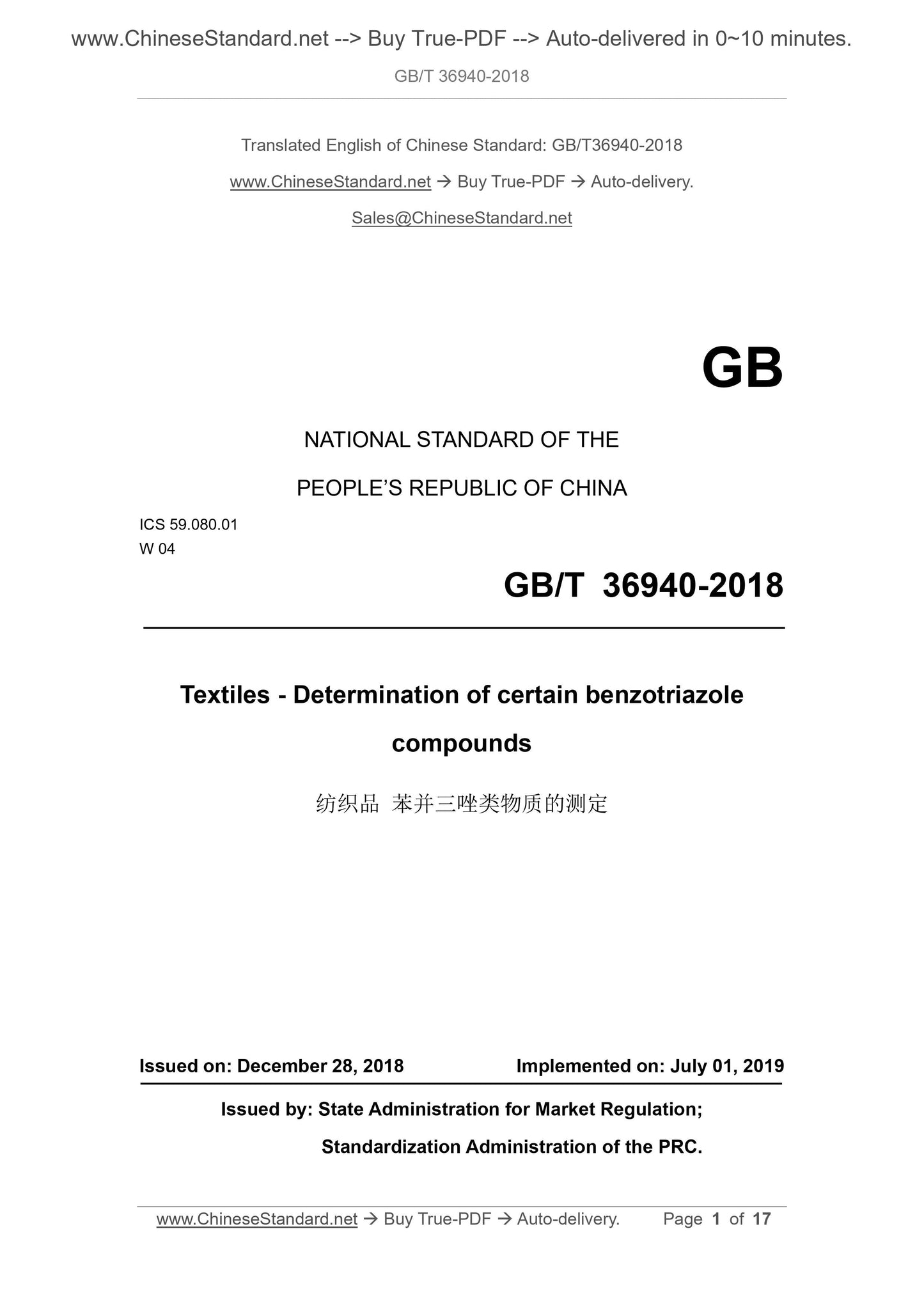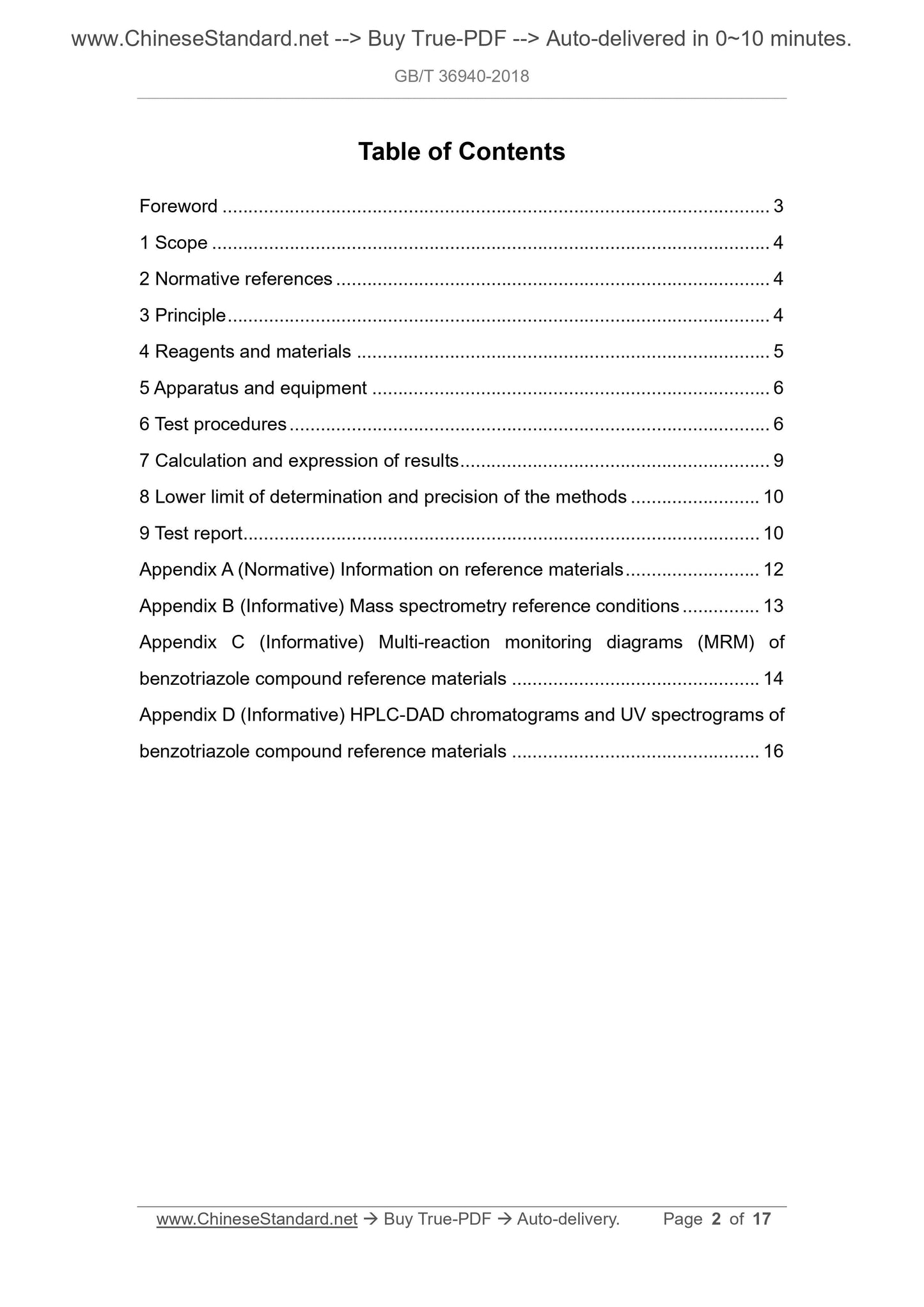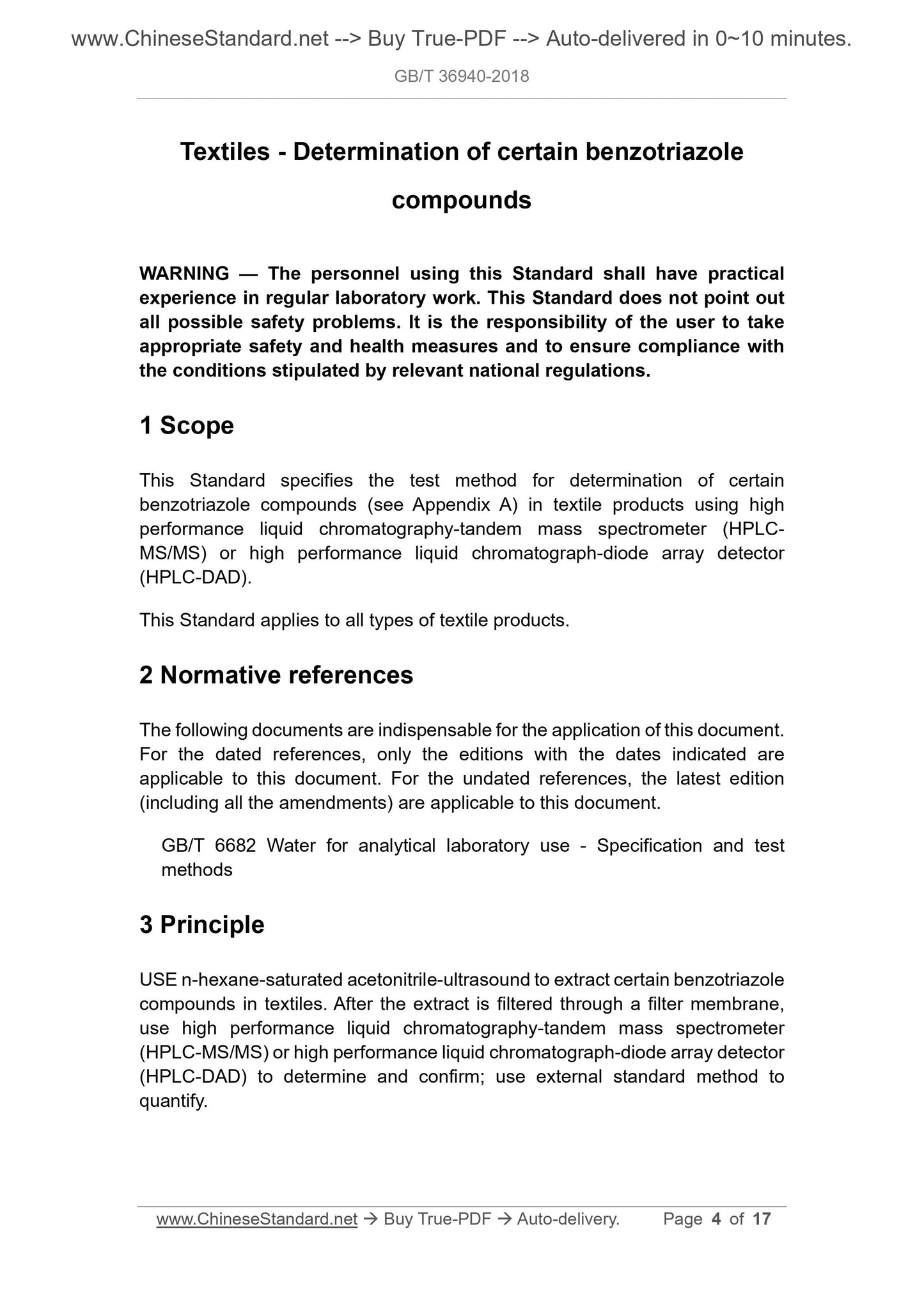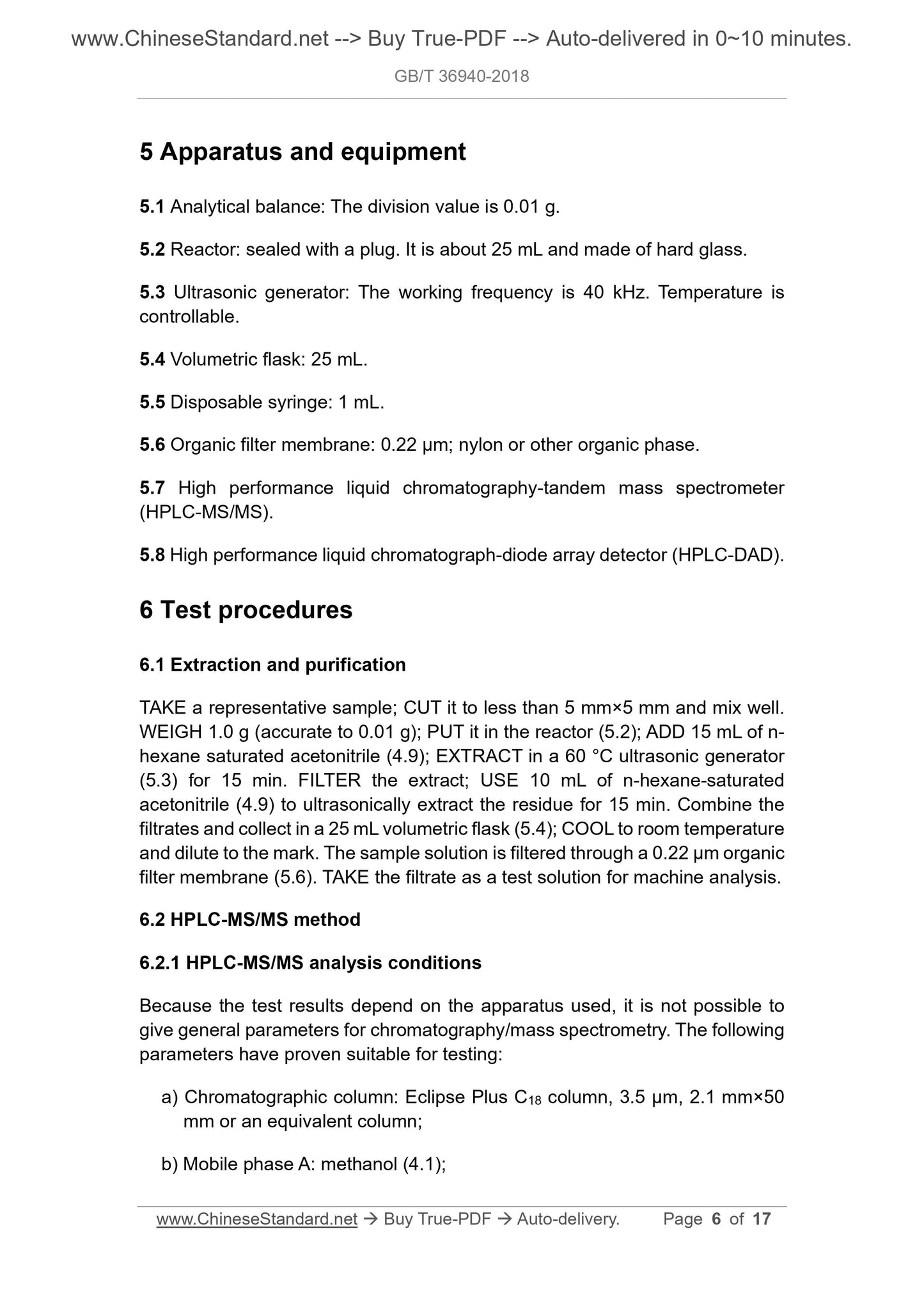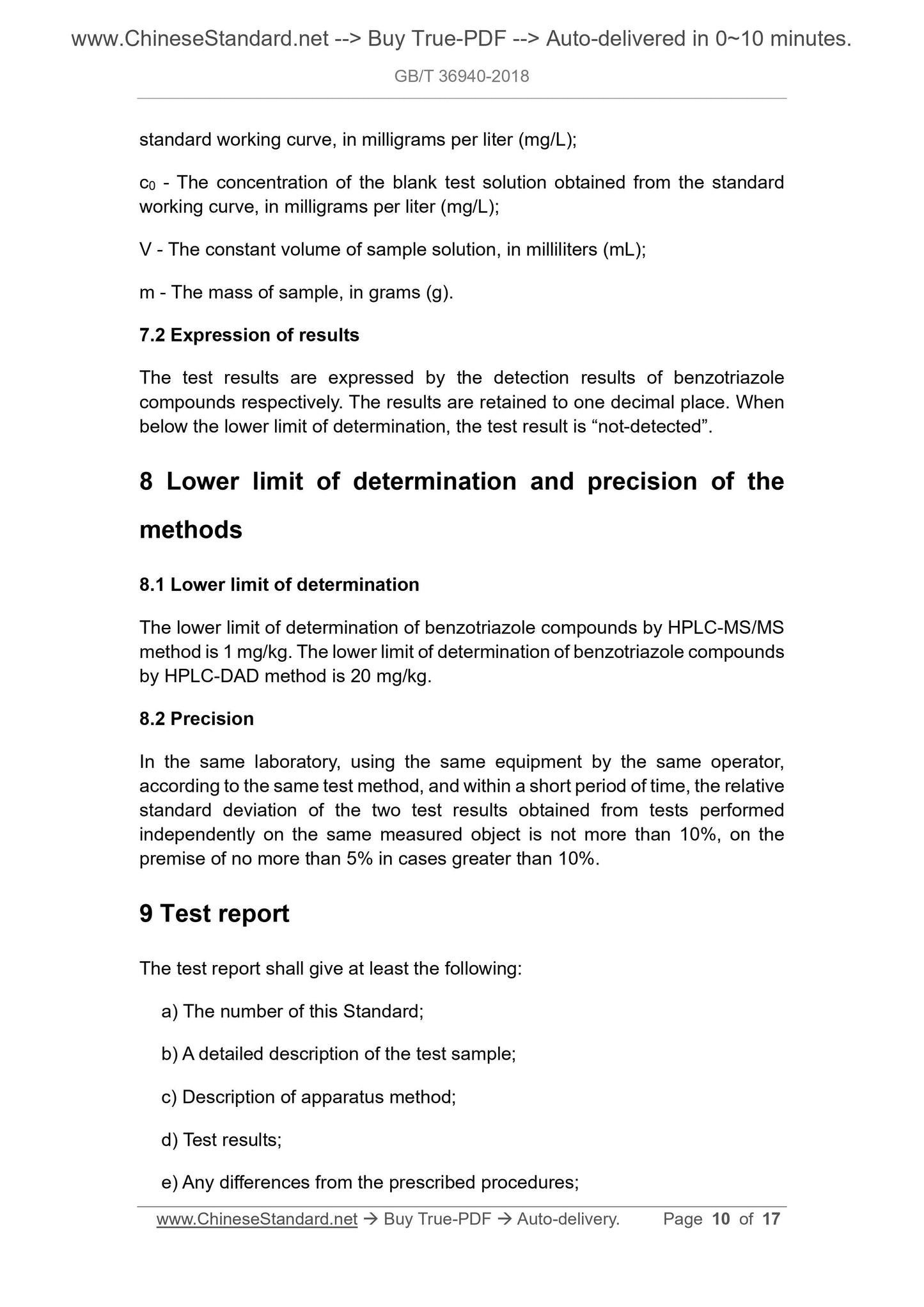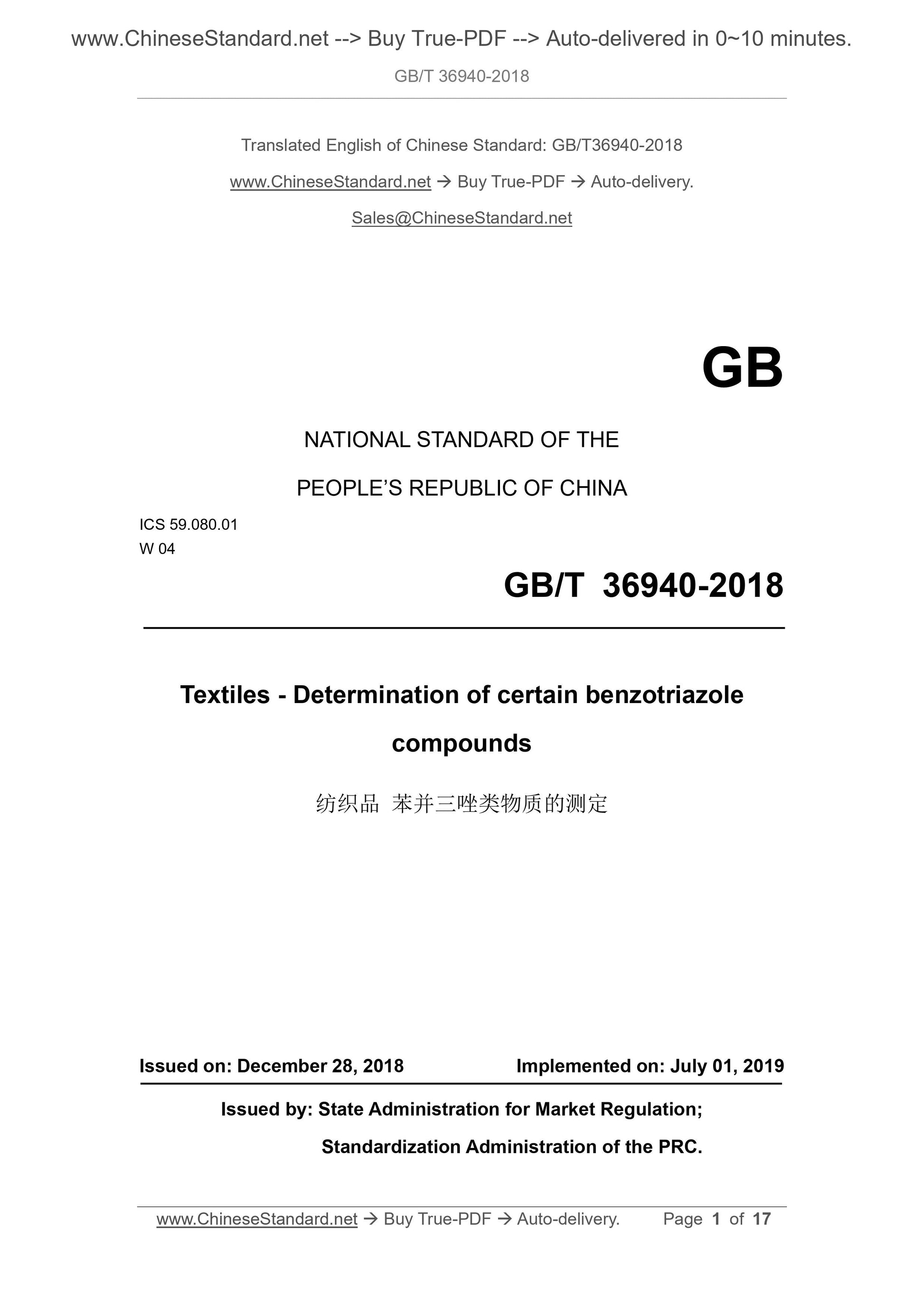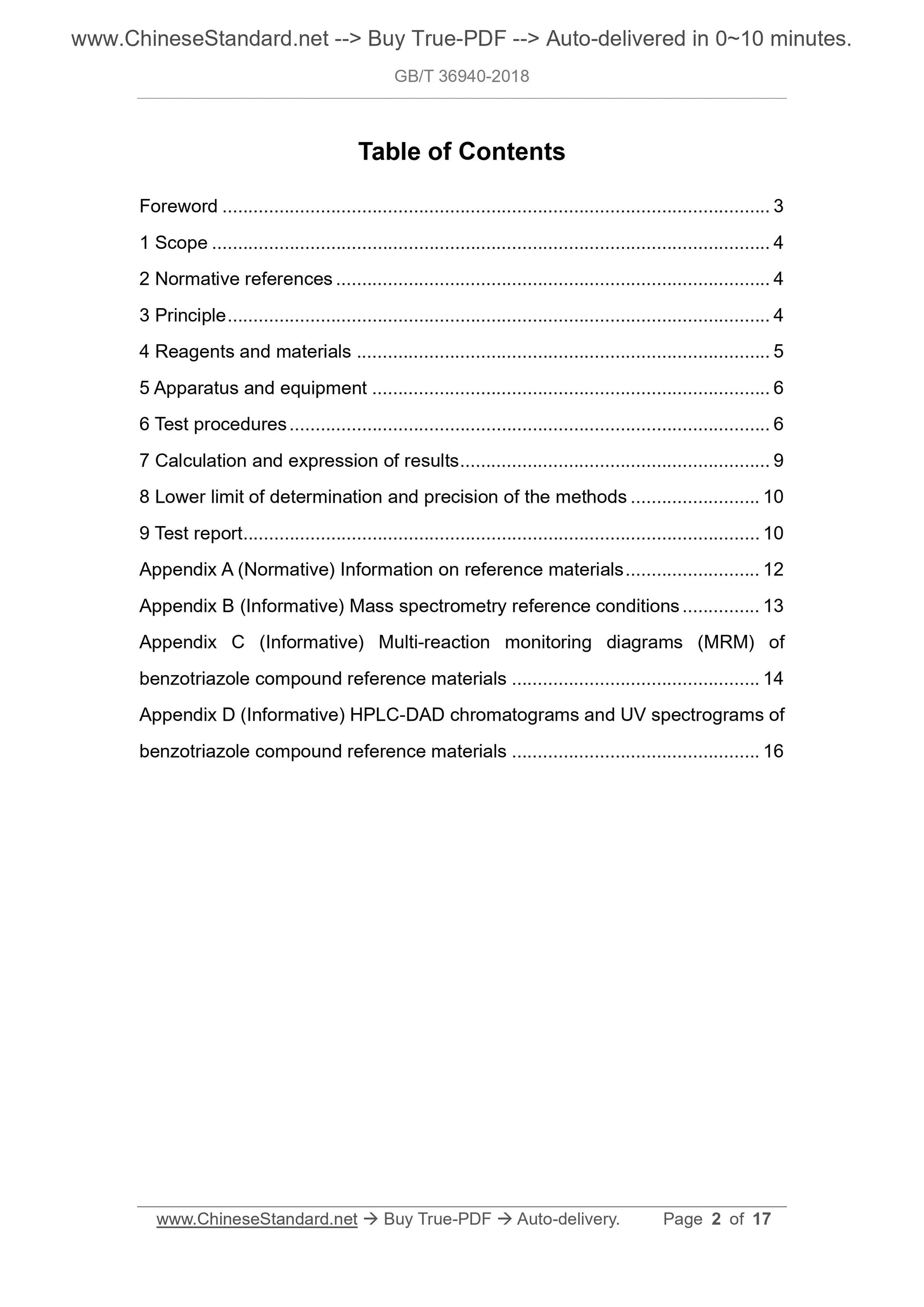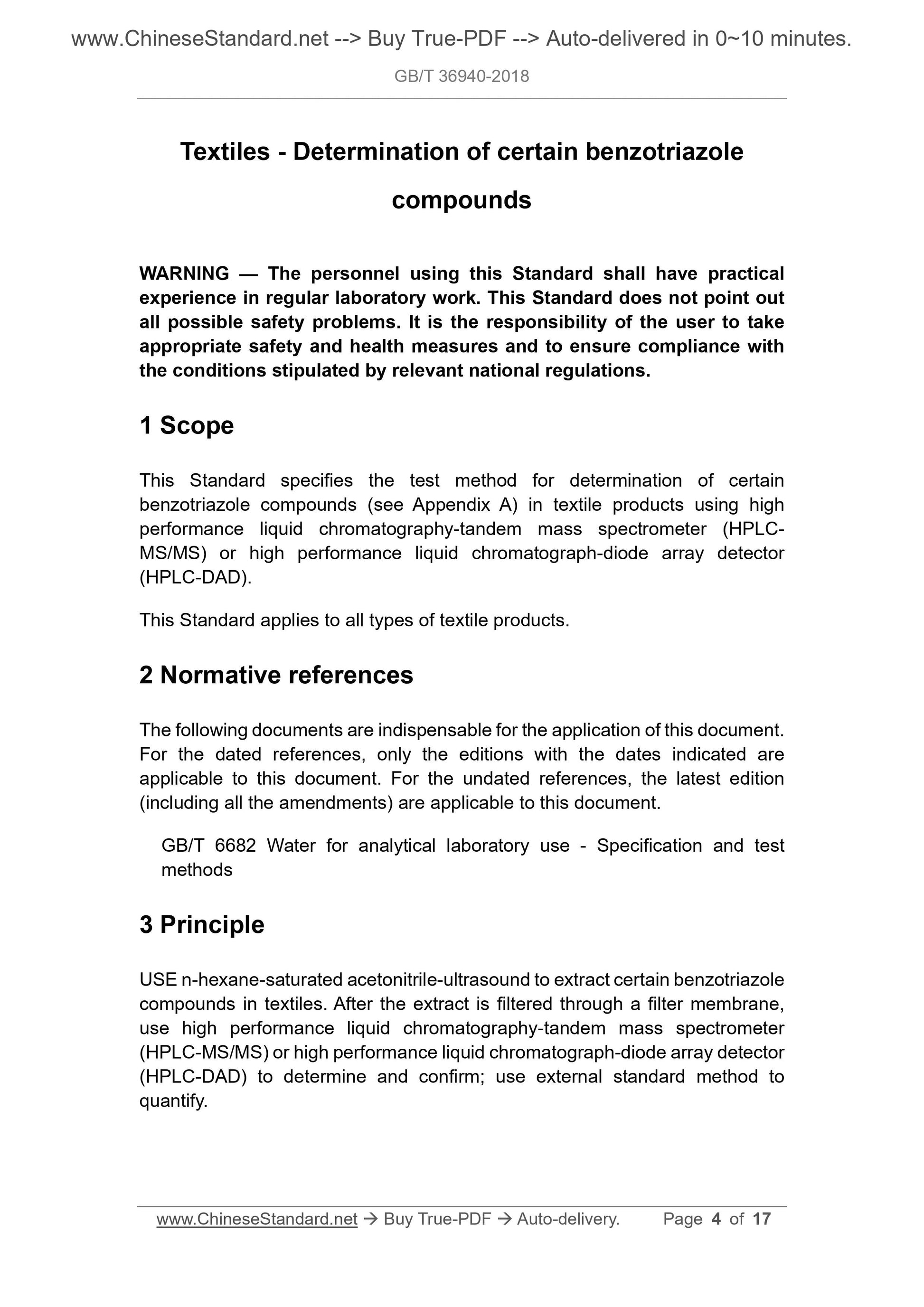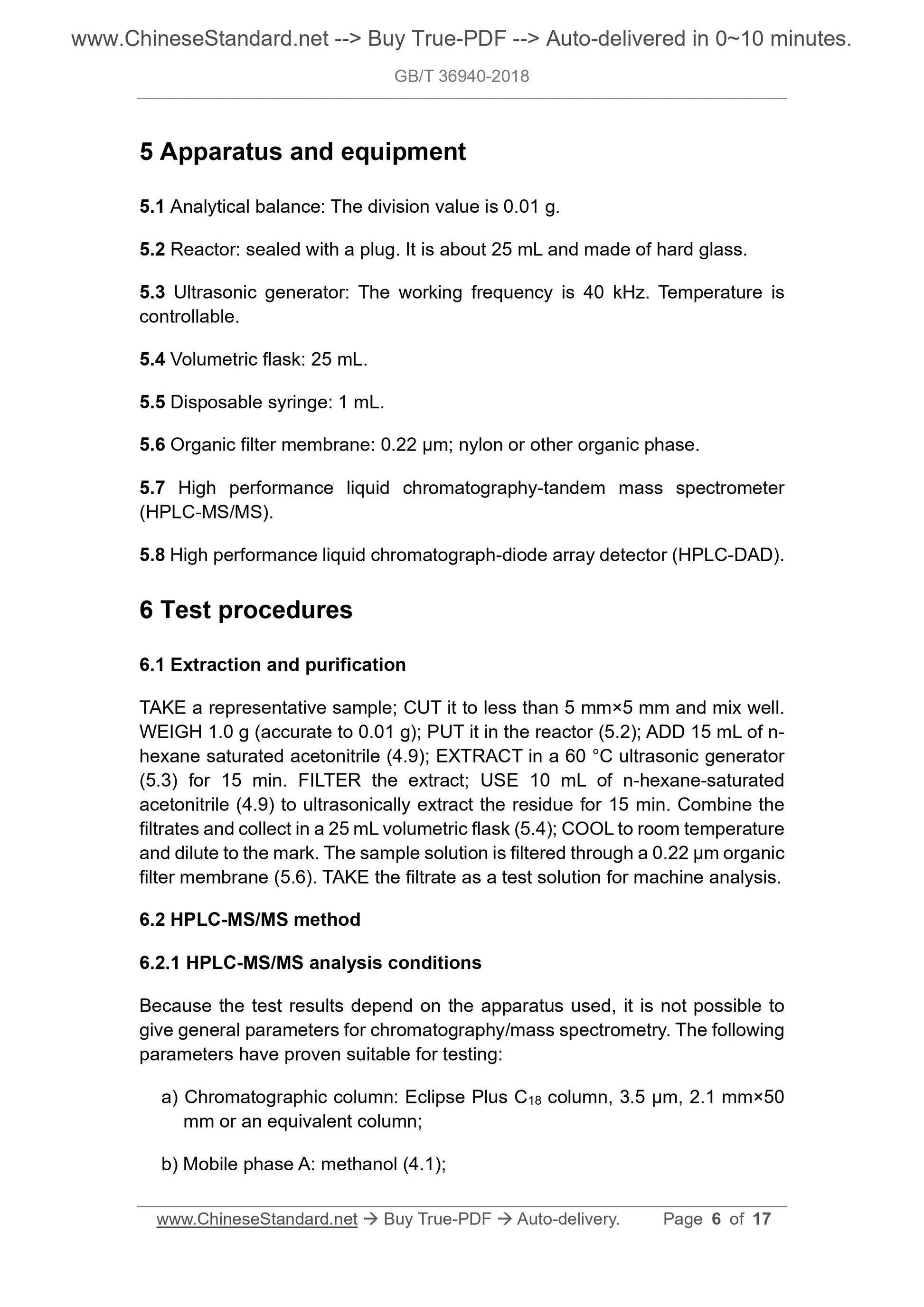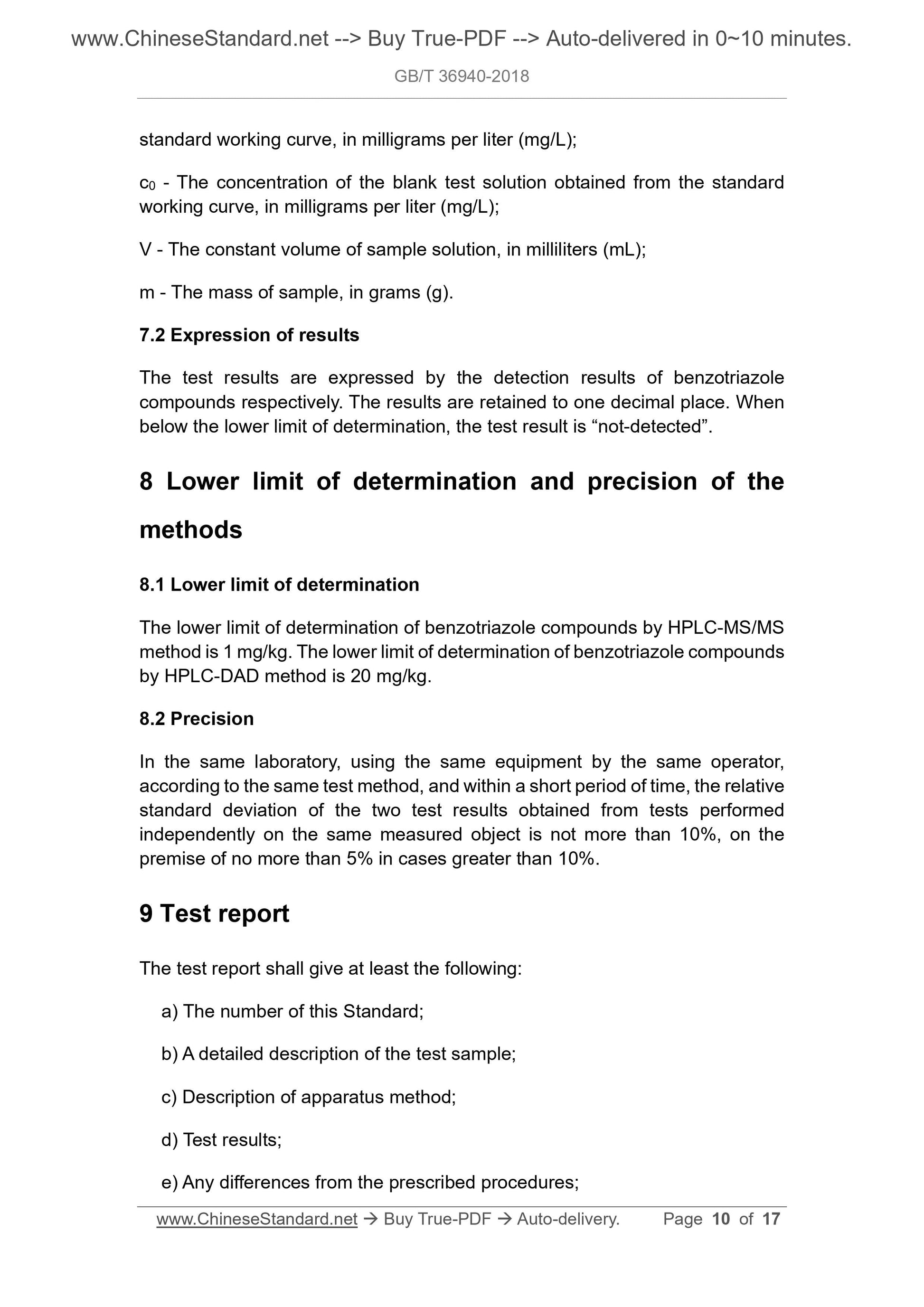1
/
of
5
www.ChineseStandard.us -- Field Test Asia Pte. Ltd.
GB/T 36940-2018 English PDF (GB/T36940-2018)
GB/T 36940-2018 English PDF (GB/T36940-2018)
Regular price
$190.00
Regular price
Sale price
$190.00
Unit price
/
per
Shipping calculated at checkout.
Couldn't load pickup availability
GB/T 36940-2018: Textiles - Determination of certain benzotriazole compounds
Delivery: 9 seconds. Download (and Email) true-PDF + Invoice.Get Quotation: Click GB/T 36940-2018 (Self-service in 1-minute)
Newer / historical versions: GB/T 36940-2018
Preview True-PDF
Scope
This Standard specifies the test method for determination of certainbenzotriazole compounds (see Appendix A) in textile products using high
performance liquid chromatography-tandem mass spectrometer (HPLC-
MS/MS) or high performance liquid chromatograph-diode array detector
(HPLC-DAD).
This Standard applies to all types of textile products.
Basic Data
| Standard ID | GB/T 36940-2018 (GB/T36940-2018) |
| Description (Translated English) | Textiles - Determination of certain benzotriazole compounds |
| Sector / Industry | National Standard (Recommended) |
| Classification of Chinese Standard | W04 |
| Classification of International Standard | 59.080.01 |
| Word Count Estimation | 14,196 |
| Date of Issue | 2018-12-28 |
| Date of Implementation | 2019-07-01 |
| Issuing agency(ies) | State Administration for Market Regulation, China National Standardization Administration |
Share
